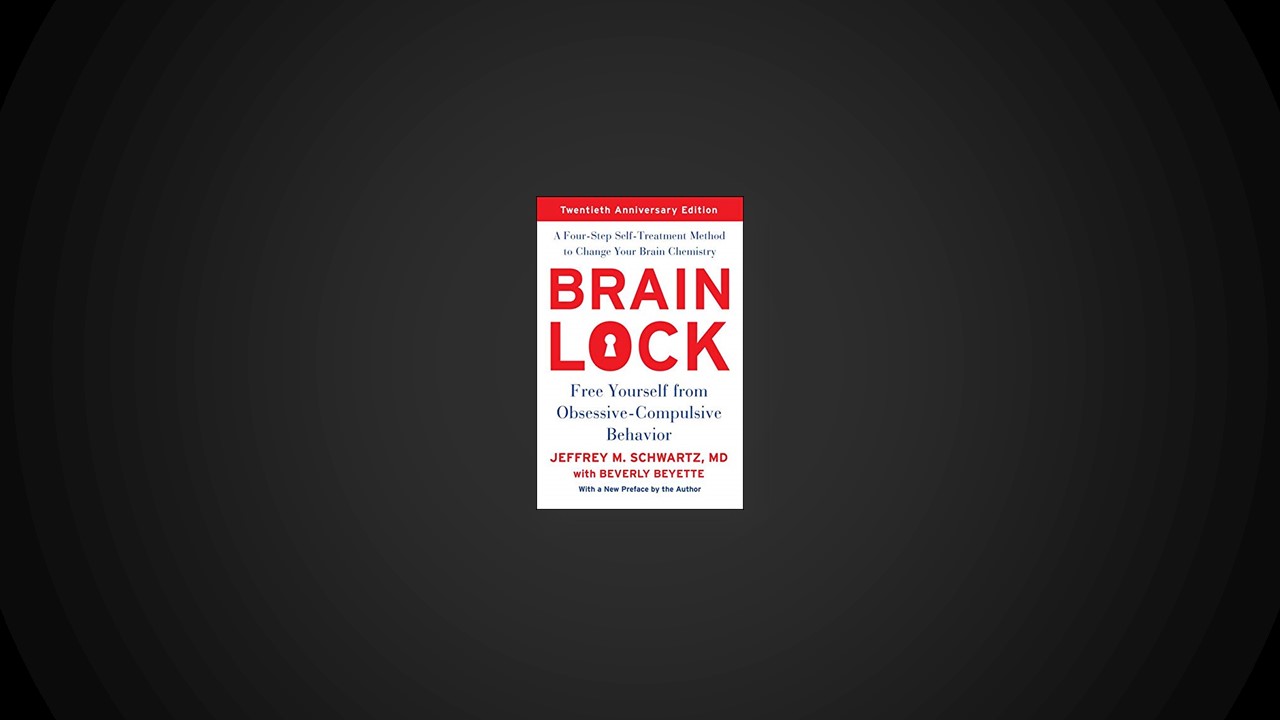Obsessions, Compulsions, and the Four-Step Self-Treatment Method
Simply defined, OCD is a lifelong disorder identified by two general groups of symptoms: obsessions and compulsions. Once thought of as a curious and rare disease, it, in fact, affects one person in forty in the general population, or more than five million Americans. A disorder that typically has its onset in adolescence or early adulthood, OCD is more common than asthma or diabetes. It is a devastating disease that often creates chaos in the lives of its victims—and those who love them. The preoccupation with repetitive behaviors, such as washing, cleaning, counting, or checking, causes trouble on the job and leads to marital strife and difficulty with social interaction. Family members may become impatient and angry, demanding, “Why don’t you just stop!” Or they may aid and abet the performance of the silly rituals to buy an hour’s peace (a very bad idea).
Obsessions are intrusive, unwelcome, distressing thoughts and mental images. The word obsession comes from the Latin word meaning “to besiege.” And an obsessive thought is just that—a thought that besieges you and annoys the hell out of you. You pray for it to go away, but it won’t, at least not for long or in any controllable way. These thoughts always create distress and anxiety. Unlike other unpleasant thoughts, they do not fade away, but keep intruding into your mind over and over, against your will. These thoughts are, in fact, repugnant to you.
Say that you’ve seen a beautiful woman and can’t get her out of your mind. That is not an obsession. That is a rumination, something not inappropriate, something quite normal and even pleasant. If Calvin Klein’s marketing department had really understood the word obsession properly, the perfume would have been called “Rumination.”
Compulsions are the behaviors that people with OCD perform in a vain attempt to exorcise the fears and anxieties caused by their obsessions. Although a person with OCD usually recognizes that the urge to wash, check, or touch things or to repeat numbers is ridiculous and senseless, the feeling is so strong that the untrained mind becomes overwhelmed and the person with OCD gives in and performs the compulsive behavior. Unfortunately, performing the absurd behavior tends to set off a vicious cycle: It may bring momentary relief, but as more compulsive behaviors are performed, the obsessive thoughts and feelings become stronger, more demanding, and more tenacious. The afflicted person ends up with both an obsession and an often embarrassing compulsive ritual to go with it. It is not surprising that many people with OCD come to see themselves as doomed and may even have suicidal thoughts by the time they seek professional help. In addition, years of traditional.
The Four Steps
For the first time ever for any psychiatric condition or any psychotherapy technique, we have scientific evidence that cognitive-behavioral therapy alone actually causes chemical changes in the brains of people with OCD.
By changing your behavior, you can free yourself from Brain Lock, change your brain chemistry, and get relief from OCD’s terrible symptoms. The end result: increased self-control and enhanced self-command, resulting in heightened self-esteem. Knowledge, as they say, is power. There is a huge difference in the impact an obsessive thought or urge has on a trained mind compared to what it has on an untrained mind. Using the knowledge that you will gain by learning the Four Steps, you will not only have a powerful weapon in your battle against your unwanted thoughts and urges, but you will empower yourself in a much broader sense. You will take a big step toward strengthening your ability to attain your goals and improve the quality of your day-to-day life. You will develop a stronger, more stable, more insightful, calmer, and more powerful mind.
The Four Steps can be used to help you control almost any intrusive thought or behavior that you decide you want to change.
The Four-Step Self-Treatment Method is a way of organizing your mental and behavioral responses to your internal thought processes. Rather than just acting impulsively or reflexively, like a puppet, when unwanted thoughts or urges intrude, you can train yourself to respond in a goal-oriented manner and can refuse to be sidetracked by self-destructive thoughts and urges.
OCD is a medical condition that is related to a biochemical imbalance in the brain.
- Obsessions are intrusive, unwanted thoughts and urges that don’t go away.
- Compulsions are the repetitive behaviors that people perform in a vain attempt to rid themselves of the very uncomfortable feelings that the obsessions cause.
- Doing compulsions tends to make the obsessions worse, especially over the long run.
- The Four Steps teach a method of reorganizing your thinking in response to unwanted thoughts and urges: They help you to change your behavior to something useful and constructive.
- Changing your behavior changes your brain. When you change your behavior in constructive ways, the uncomfortable feelings your brain is sending you begin to fade over time. This makes your responses easier to manage and control.
- It’s not how you feel, but what you do that counts.
Step 1: Relabel: “It’s Not Me—It’s My OCD”
Step 1: Relabel answers the question, “What are these bothersome, intrusive thoughts?” The important point to keep in mind is that you must Relabel these unwanted thoughts, urges, and behaviors. You must call them what they really are: They are obsessions and compulsions. You must make a conscious effort to keep firmly grounded in reality. You must strive to avoid being tricked into thinking that the feeling that you need to check or to count or to wash, for example, is a real need. It is not.
Your thoughts and urges are symptoms of obsessive-compulsive disorder (OCD), a medical disease.
- Relabel means calling the intrusive unwanted thoughts and behaviors what they really are: obsessions and compulsions.
- Relabeling won’t make unwanted thoughts and urges go away immediately, but it will prepare you to change your behavioral responses.
- When you change your behavior, you change your brain.
- The key to success is to strengthen your Impartial Spectator, your ability to stand outside yourself and observe your actions with mindful awareness.
Step 2: Reattribute: “Unlocking Your Brain”
Step 2: Reattribute answers the questions, “Why don’t these bothersome thoughts, urges, and behaviors go away?” “Why do they keep bothering me?” “What should I attribute them to?”
The answer is that they persist because they are symptoms of obsessive-compulsive disorder (OCD), a condition that has been scientifically demonstrated to be related to a biochemical imbalance in the brain that causes your brain to misfire. There is now strong scientific evidence that in OCD a part of your brain that works much like a gearshift in a car is not working properly. Therefore, your brain gets “stuck in gear.” As a result, it’s hard for you to shift behaviors. Your goal in the Reattribute step is to realize that the sticky thoughts and urges are due to your balky brain
- Reattribute means answering the questions “Why do these thoughts and urges keep bothering me? Why don’t they go away?” The answer is, because of a medical condition called OCD.
- OCD is related to a biochemical imbalance in the brain that results in a malfunction of the brain’s gearshift: The brain gets “stuck in gear.”
- Because the brain is stuck in gear, its “error-detection circuit” keeps firing inappropriately. This causes very uncomfortable feelings.
- Changing your behavioral responses to the uncomfortable feelings and shifting to useful and constructive behaviors will, over time, make the broken gearshift come unstuck.
- As the brain starts to shift gears properly, the uncomfortable feelings begin to fade and become easier to control.
Step 3: Refocus: “Wishing Won’t Make It So”
Step 3: Refocus tells you what to do when you are trying to overcome those urges to do the compulsive behaviors. It instructs you to “work around” those nagging, troublesome thoughts by Refocusing your attention on some useful, constructive, enjoyable activity, such as gardening or playing a computer game. The key to the Refocus step is to do another behavior. When you do, you are repairing the broken gearshift in your brain. Your brain starts shifting more smoothly to other behaviors. The more you practice the Refocus step, the easier it becomes. That’s because your brain is beginning to function more efficiently.
- Refocus means to change your behavioral responses to unwanted thoughts and urges and focus your attention on something useful and constructive. DO ANOTHER BEHAVIOR.
- This is the no pain, no gain step. You must be ACTIVE. You cannot be passive.
- Use the fifteen-minute rule: Work around your symptoms by doing something wholesome and enjoyable for at least fifteen minutes. After fifteen minutes, make mental notes of how your symptoms have changed and try to Refocus for another fifteen minutes.
- Use your Impartial Spectator. It will strengthen your mind.
- When you change your behavior, you change your brain.
Step 4: Revalue: “Lessons Learned from OCD”
Step 4: Revalue is a natural outcome of diligent practice of the first three steps—Relabel, Reattribute, and Refocus. With consistent practice, you will quickly come to realize that your obsessive thoughts and compulsive behaviors are worthless distractions to be ignored. With this insight, you will be able to Revalue and devalue the pathological urges and fend them off until they begin to fade. As your brain begins to work better, it will become easier to see the obsessions and compulsions for what they really are. Your brain will function in a much more normal, automatic way. As a result, the intensity of your symptoms will decrease.
- Revalue means don’t take your symptoms at “face value”—they don’t mean what they say. See them for what they are.
- Work to Revalue in an active way, by seeing the reality of the situation as quickly and clearly as possible. Strengthen the clarity of your observation with assertive mental notes, such as “It’s not me—it’s just OCD.”
- When you Revalue and devalue unwanted thoughts and urges, you are strengthening your Impartial Spectator and building a powerful mind.
- A mind that can take note of subtle changes and understand the implications of those changes is a powerful mind.
- A powerful mind can change the brain by altering responses to the messages the brain sends.
- This is true self-command. It results in real self-esteem.
Self-Treatment Manual for the Four-Step Method
We who have OCD must learn to train our minds not to take intruding feelings at face value. We have to learn that these feelings mislead us. In a gradual but tempered way, we’re going to change our responses to the feelings and resist them. We have a new view of the truth. In this way, we gain new insights into the truth. We learn that even persistent, intrusive feelings are transient and impermanent and will recede if not acted on.
And, of course, we always remember that these feelings tend to intensify and overwhelm us when we give in to them. We must learn to recognize the urge for what it is—and to resist it. In the course of performing this Four-Step Method of behavioral self-treatment, we are laying the foundation for building true personal mastery and the art of self-command. Through constructive resistance to OCD feelings and urges, we increase our self-esteem and experience a sense of freedom. Our ability to make conscious, self-directed choices is enhanced.
By understanding this process by which we empower ourselves to fight OCD and by clearly appreciating the control one gains by training the mind to overcome compulsive or automatic responses to intrusive thoughts or feelings, we gain a deepening insight into how to take back our lives. Changing our brain chemistry is a happy consequence of this life-affirming action. True freedom lies along this path of a clarified perception of genuine self-interest.


